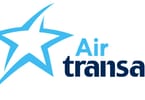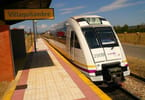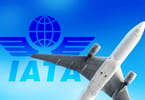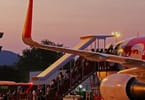Johannesburg — AT A time when airline executives remind us virtually daily that the industry is facing a crisis of unprecedented proportions, South African airlines have been surprisingly profitable.
Several factors, including a lag in the South African economy, may have saved the local industry this year but, industry leaders warn, our airlines are far from being in rude health and face numerous challenges in the next 12 months.
“Yes, the airlines are all doing fairly well but it is not as rosy as the financial numbers suggest. There are still huge challenges ahead and the margins are as vulnerable as ever,” says Gidon Novick, joint CEO of Comair .
Falling passenger volumes, volatile fuel prices and potentially large fee increases from Airports Company SA (Acsa) and Air Traffic and Navigation Services (ATNS) are all big threats to the airline’s yields or margins.
From a purely financial point of view, there appears to be a stark difference between SA’s airlines and those elsewhere in the world.
In most parts of the world the news has been dire. Last week, the International Air Transport Association (Iata) said that the global industry reported cumulative losses of close to 6bn in the first half of this year. Some of the world’s biggest airlines are fighting for survival, including British Airways and Air France- KLM, both this year reporting huge losses.
Yet our national carrier, South African Airways (SAA), last month confounded analysts when it reported a R398m net profit after three years of billion- rand losses.
The low-cost airlines also surprised with financial numbers released in the first half of the year. Comair, operators of British Airways and kulula.com, reported headlines earnings up 27% to R73m for the year to June 30, while 1time Holdings reversed a R6,3m headline loss in the first six months of last year into a R50,8m profit this time around.
Even Mango, SAA’s low-cost airline, made a R10m profit. However, without any financial detail to probe that profit, it may be difficult to analyse the sustainability of those earnings or how they were achieved in the first place.
Siza Mzimela, CEO of SA Express, points out that to some extent local carriers may have been protected by the fact that SA lags behind the rest of the world. “African carriers have performed better because the slight delay between us and other carriers worldwide has allowed contingencies to quickly be applied to adapt to the situation,” he said.
Another saving grace, sadly, was the demise of Nationwide in April last year. It came just as passenger demand began to decline and its rivals were able to pick up additional passengers.
But scratch below the surface and it still does not look all that good.
At the same time as Chris Smyth, acting CEO of SAA, announced vastly improved numbers and the fact that the airline would no longer seek state assistance, he said volumes were sharply down in the first few months of the new financial year. In the four months to the end of July, international traffic was down 11% year on year, while domestic traffic was down 10%.
“Passenger demand seems to have bottomed out, but it is also not improving. We are experiencing a long U in demand and are bumping along the bottom at the moment,” says Chris Zwiegenthal, CEO of the Airlines Association of Southern Africa.
Glenn Orsmond, CEO of 1time Holdings , says there are improvements in demand but it is too early to say if the recovery is sustainable. Novick points out that the improvements also follow the sharp drop in the previous year.
This drop in passenger demand has meant that average fares have also come under pressure. “The one advantage we had this year was that due to the sharp rise in oil prices last year, we were forced to raise our fares. Fuel prices have since come down from their record highs last year but fares have not dropped by the same margin,” says Orsmond. However, he warns that should fuel prices move towards 100 a barrel again, that cushion would be quickly eroded.
Zwiegenthal says airfares and yields could also come under pressure when the economy resumes its growth.
“The airlines have of late been more focused on their own survival and there has not been the intense competition we have seen in the past.
“However, when the economy does improve, the competitive juices will begin flowing again and put fares under pressure.”
There is also huge concern about substantial rises in charges from various service providers. Acsa, having spent close to R17bn on new airport infrastructure, will likely seek an increase of 133% in airport charges, while ATNS will seek a rise of 33%, the first in three years.
“At the moment, airport- related charges make up about 25% of the overall fare on the Johannesburg-Durban route. If the airport regulator approves these increases, those fees will make up 50% of the fare.
“That is likely to discourage more people from flying, which ironically will hurt Acsa too,” says Novick.
Mzimela agrees. “At the end of the day, our customers and our bottom line are affected by these charges, which are outside our control.”
So how will the airlines survive these challenges? Novick says the one advantage of the downturn is that airlines were forced to trim their costs like never before.
“There were no sacred cows. Everything was up for negotiation. Now those savings will help us for years to come.”
Smyth said last month that SAA’s restructuring process, which shaved off R2,5bn in costs, was perfectly timed and has so far allowed the airline to survive the economic storm.
The fuel shock last year also led airlines to improve efficiencies. SAA, Comair, SA Express and 1time are all investing in new fuel-efficient aircraft.
Airlines are also increasingly focusing on ancillary revenue from travel bookings on their websites, flight training and other noncore services.
Comair has in the past 18 months built on its online travel business while 1time has focused on growing its maintenance division, having acquired a 77,5% stake in Safair Technical through its subsidiary, Aeronexus, last year. SA Express has also benefited from its training and technical expertise.
“The real benefit of these ancillary services is that they flow straight to the bottom line,” says Novick.
The question, though, is whether the airlines have done enough to see them through another tough year.
WHAT TO TAKE AWAY FROM THIS ARTICLE:
- At the same time as Chris Smyth, acting CEO of SAA, announced vastly improved numbers and the fact that the airline would no longer seek state assistance, he said volumes were sharply down in the first few months of the new financial year.
- Several factors, including a lag in the South African economy, may have saved the local industry this year but, industry leaders warn, our airlines are far from being in rude health and face numerous challenges in the next 12 months.
- Com, reported headlines earnings up 27% to R73m for the year to June 30, while 1time Holdings reversed a R6,3m headline loss in the first six months of last year into a R50,8m profit this time around.






















